Via Podiensis: The Churches of Villafranca
For such a relatively small town, Villafranca del Bierzo is full of churches, monasteries, and convents. This evening, I attempted to visit some of them.
First I tried to get into the 17th century Convent de la Anunciada, which contains the tomb of Saint Lawrence of Brindisi, but I was ultimately unsuccessful. Since this is still an actual Cistercian convent, I suppose I shouldn’t be entirely surprised. Still, it would have been nice to pray here.
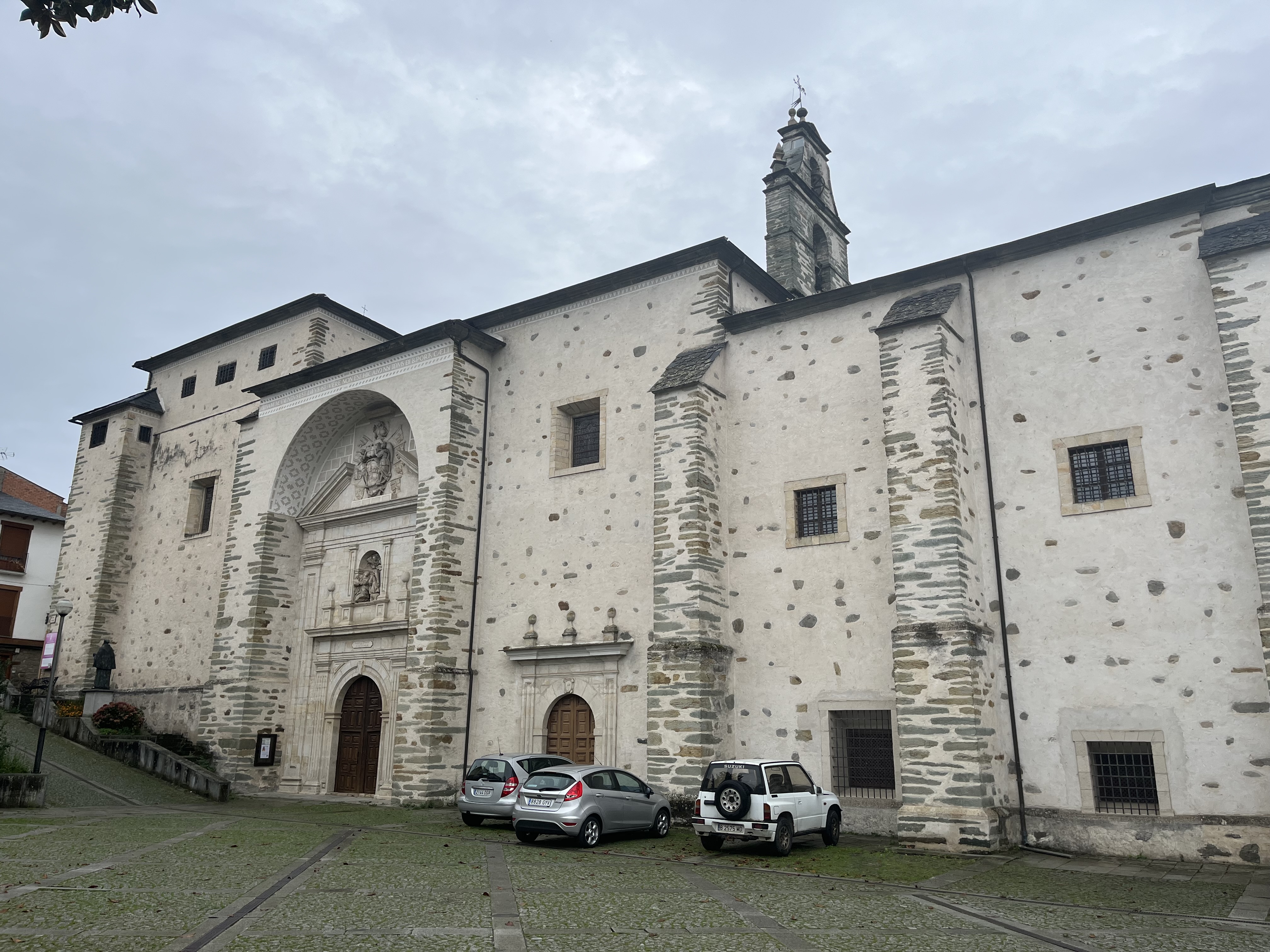
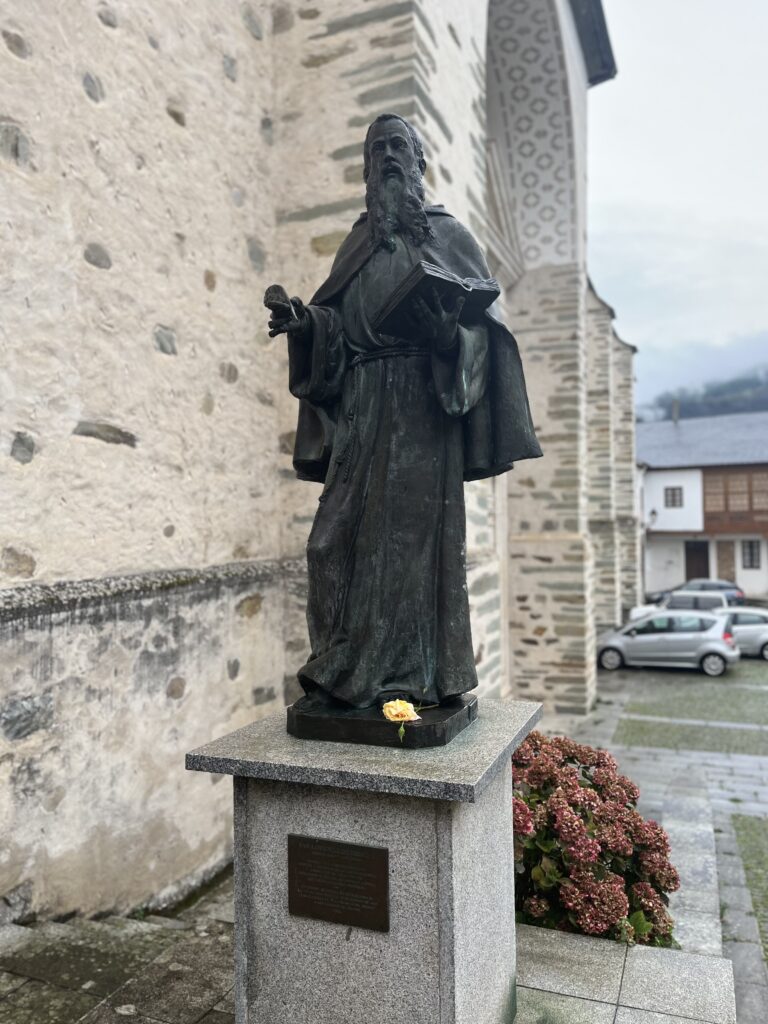
Next, I walked past the old castle (which was closed) to the 12th century church of Santiago, which I had passed on my way into town. It includes a doorway known as the Puerta del Perdón. In medieval times, pilgrims who were too injured or ill to continue all the way to Santiago could obtain the indulgence by going through this door, as verified by a priest assigned to constant duty here.
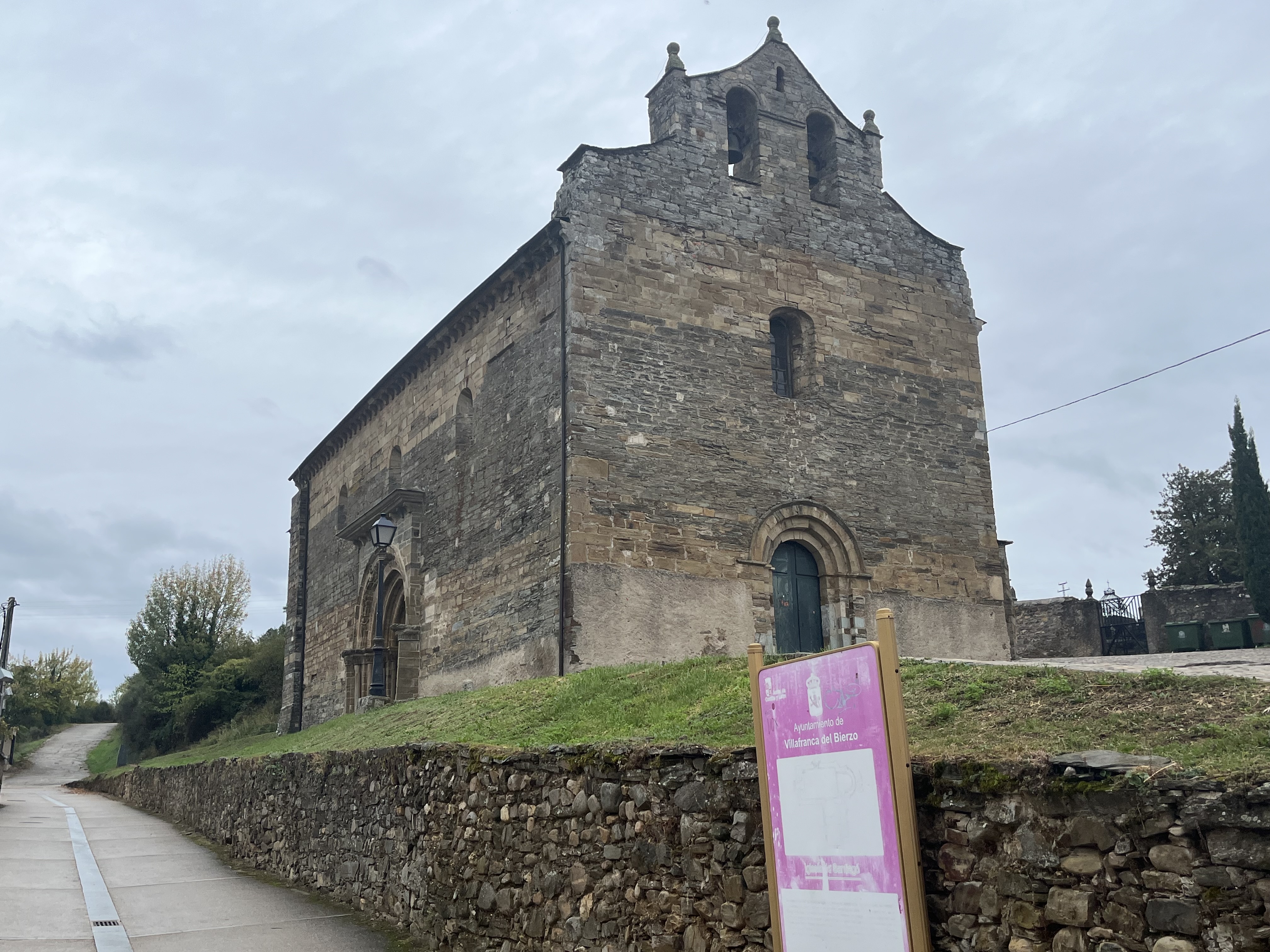
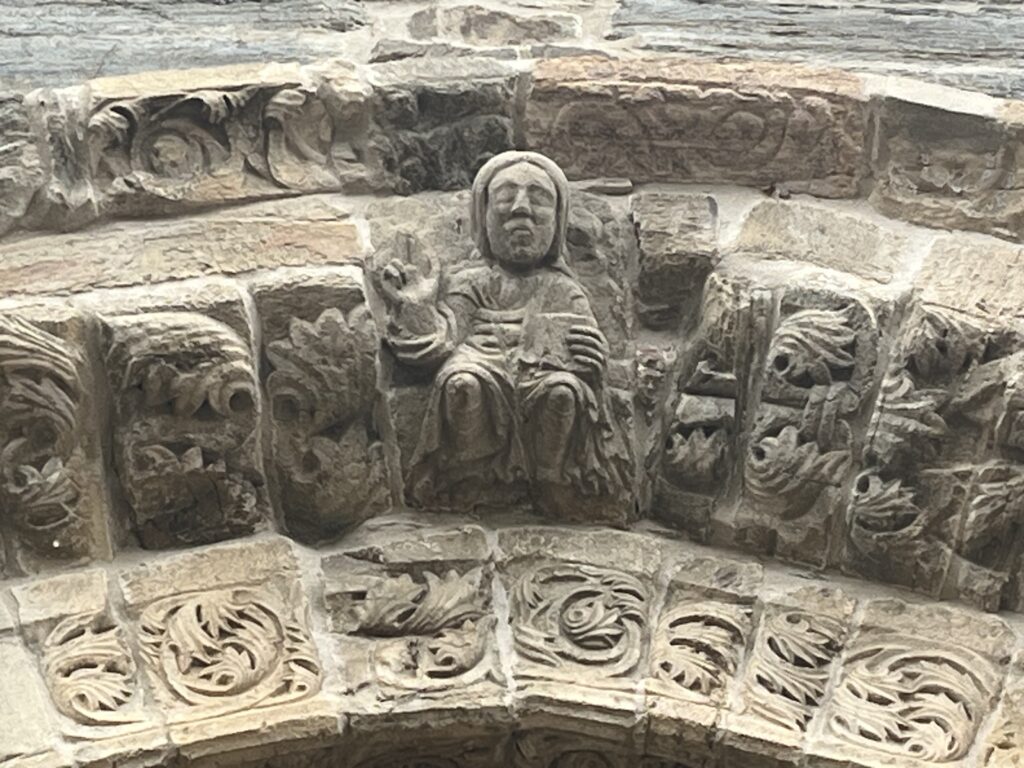
I walked all around the church, and I was unable to figure out which door was which. In any case, they were all locked.
Next, I headed for the 13th century church of San Francisco (a.k.a. Nuestra Señora de los Angeles), which is said to have been founded by Saint Francis of Assisi himself in 1214 on his pilgrimage to Santiago. It was substantially rebuilt in the 15th century.
Finding this church involved a romp through narrow twisty medieval streets, including some descents by staircase and even switchbacks. And then of course, there was the whole “going up on the other side of the valley” thing.
The layout of this town is a mystery to me. It seems to be built on three sides of a ravine, but there’s literally nothing at the bottom but an empty field.
My legs were not very happy with me with all these ups and downs, but when was I going to get another chance to see these churches?
The church was on the top of the hill, and finding the way up to it was not easy. But it was open!
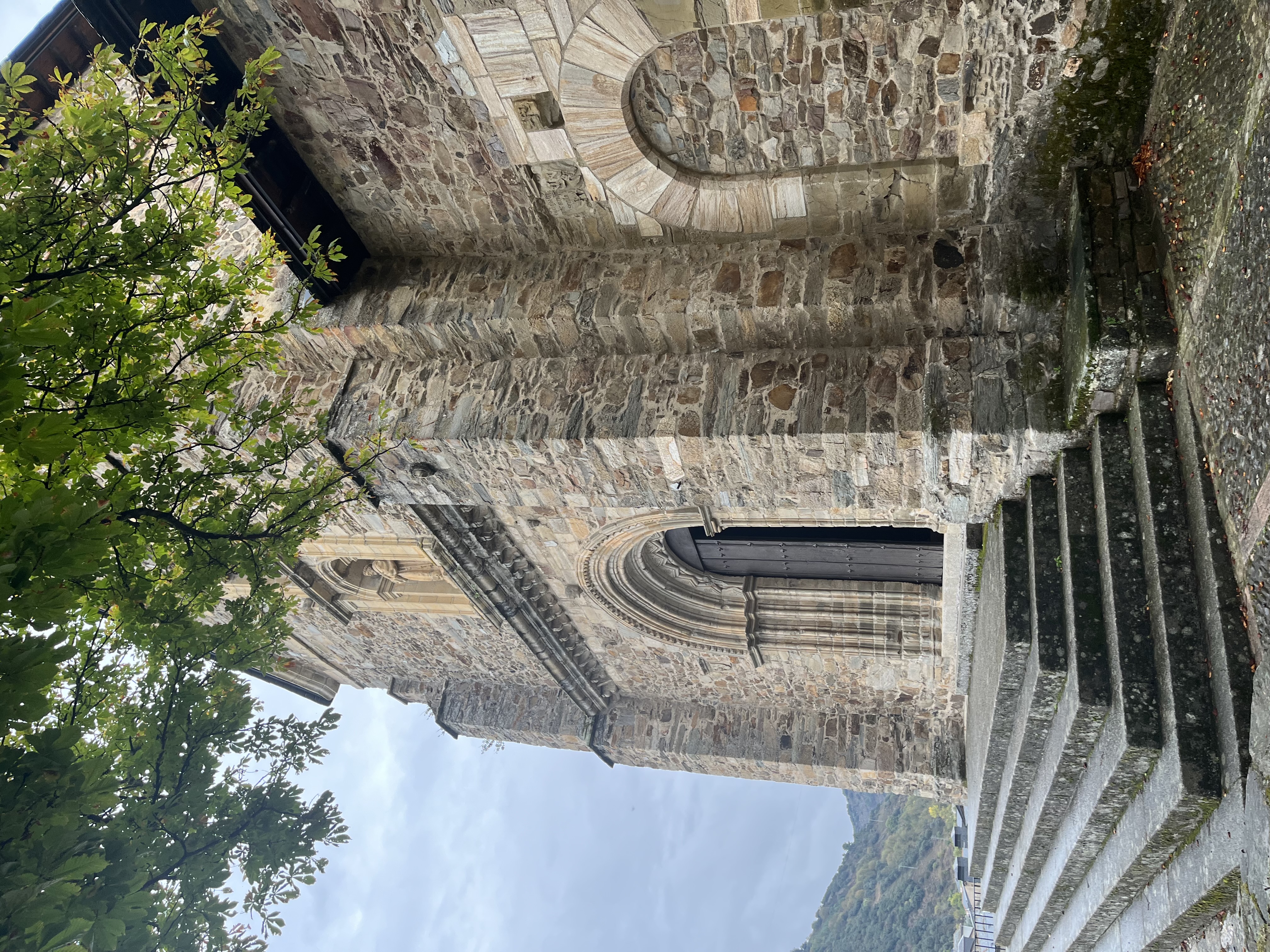
The church was built in Romanesque style, but of course this is Spain, and the interior furnishings are all Baroque.
The 18th century side chapel to Our Lady of Sorrows was a place I found incredibly moving. I lit the candle here and sat and prayed for some time. What I found absolutely fascinating about this chapel is, though there are several statues and images here, not one of them is of the Blessed Virgin.
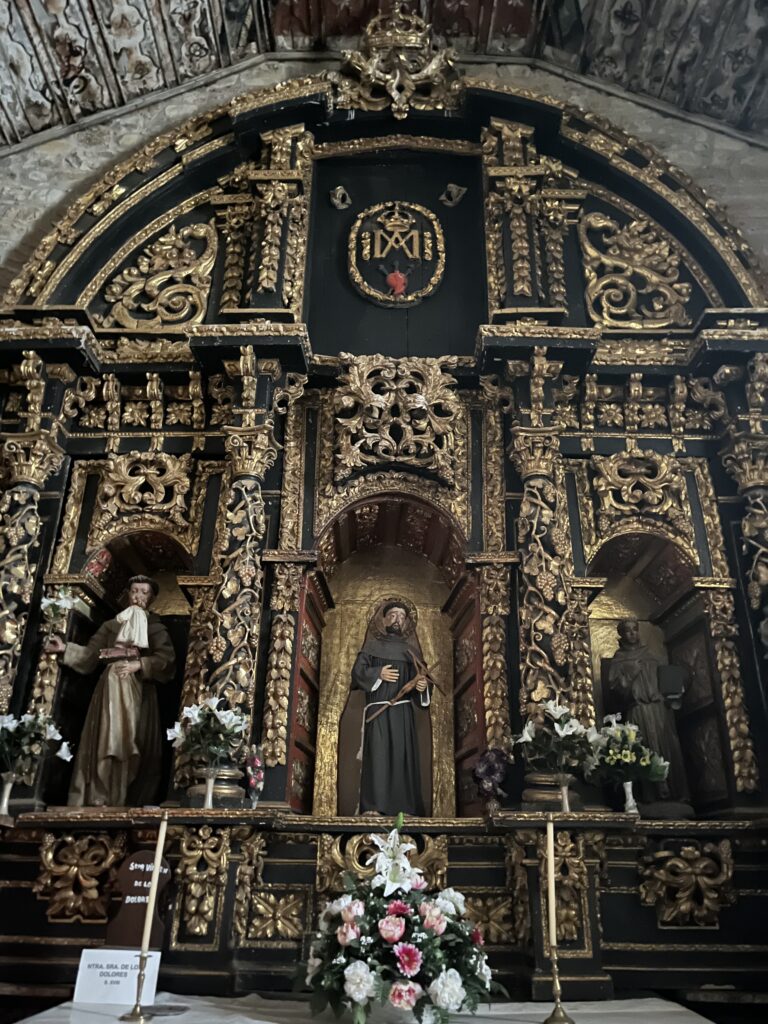
I prayed Vespers in this chapel for the intentions of the Camino.
The main nave contains, among other things, the grave of a poet from El Bierzo who died in Berlin in the 19th century. I don’t know that I’ve seen another place where a poet has been buried in the nave of a church. I feel we should do more of that.
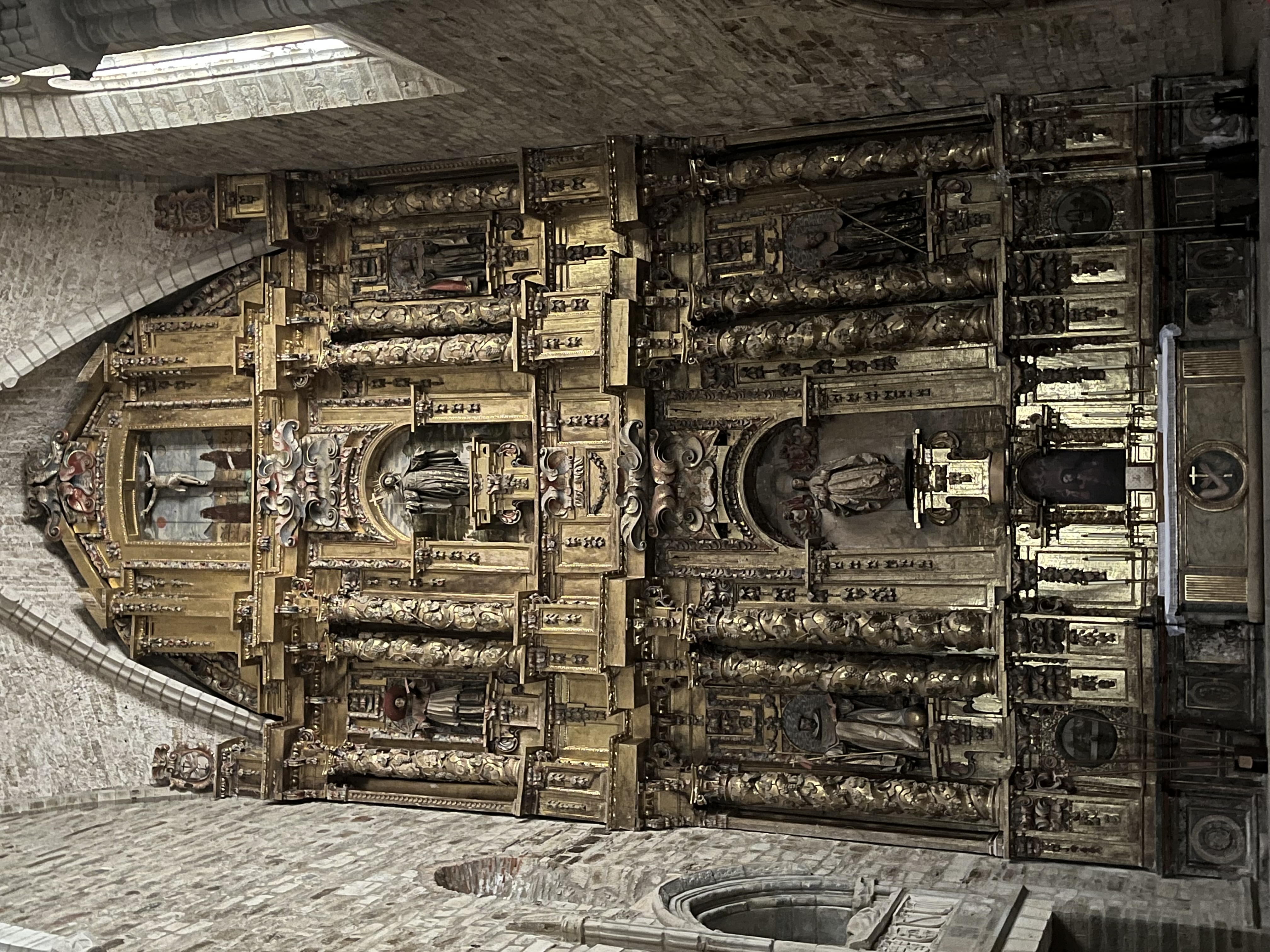
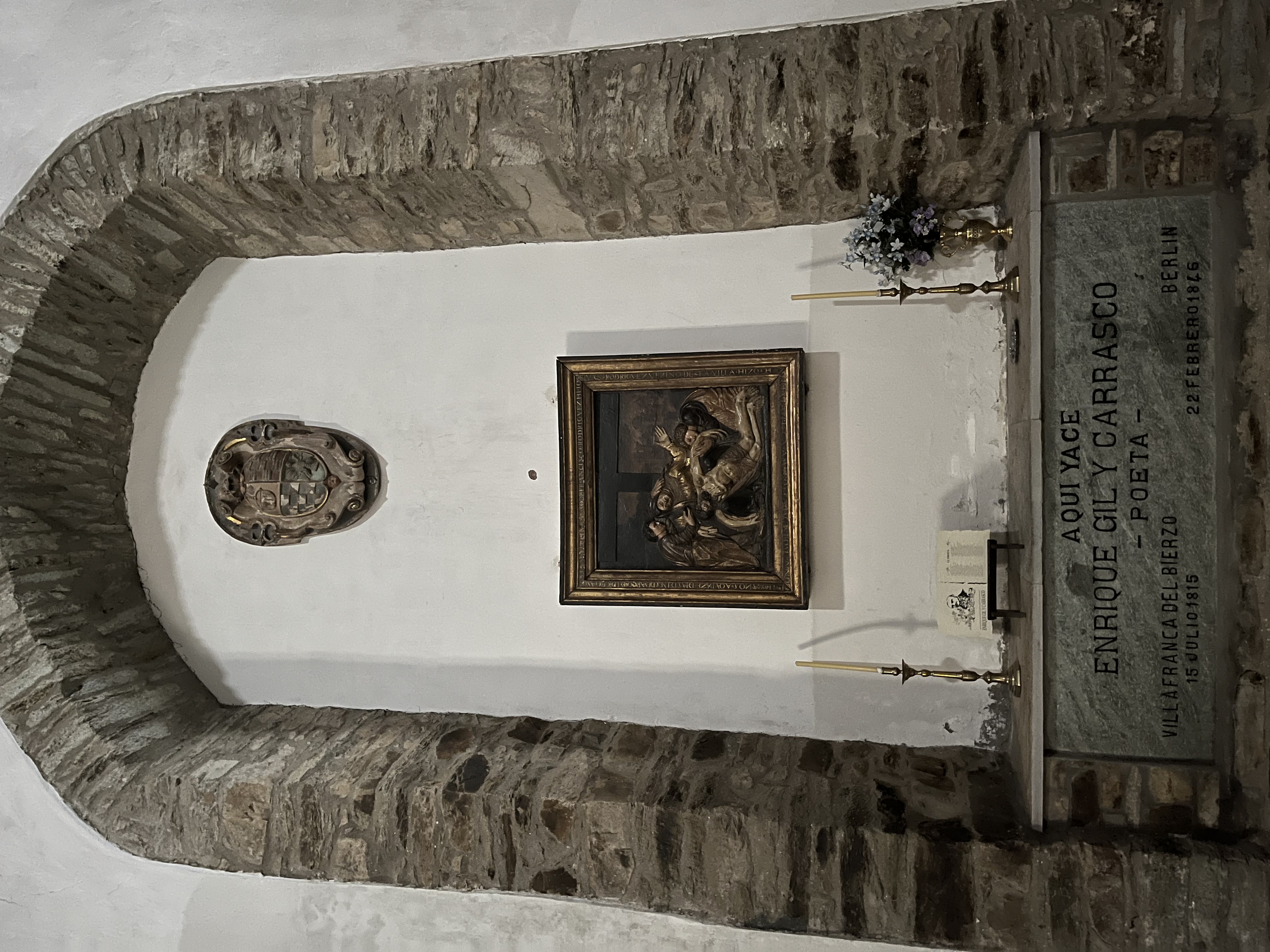
From here, I headed to the 11th century (?) church of Santa María de Cluniaco. It was renovated and substantially rebuilt to such an extent in the 17th century that the date of its original construction has been obscured.
More steps were involved.
On my way to visit this church, I noticed that there were at least three separate ways the Camino went through this town. One way avoided every church. This is the best marked trail, and the one that I have taken in past years. Other versions of the route, all more or less marked throughout the town, go by some or most of the churches here.
As I approached this church, the thing that stood out most was its height. This is an extremely vertical building, even including a turret.
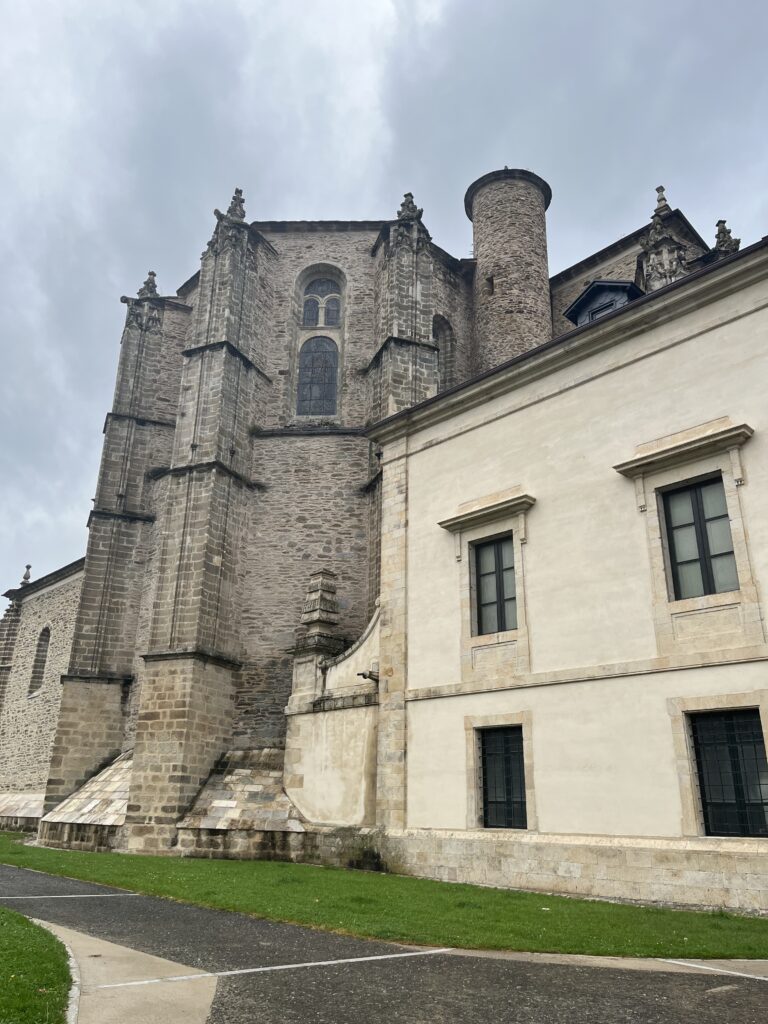
As for the interior, I have no idea how you would classify the style architecturally. It’s like a weird cross between Byzantine and Gothic, with elements of Neoclassicism. And of course Neoclassical and Baroque and Rococo retablos throughout. There is one altar that I would have to classify as Gothic revival, but honestly I’ve never seen anything like it before.
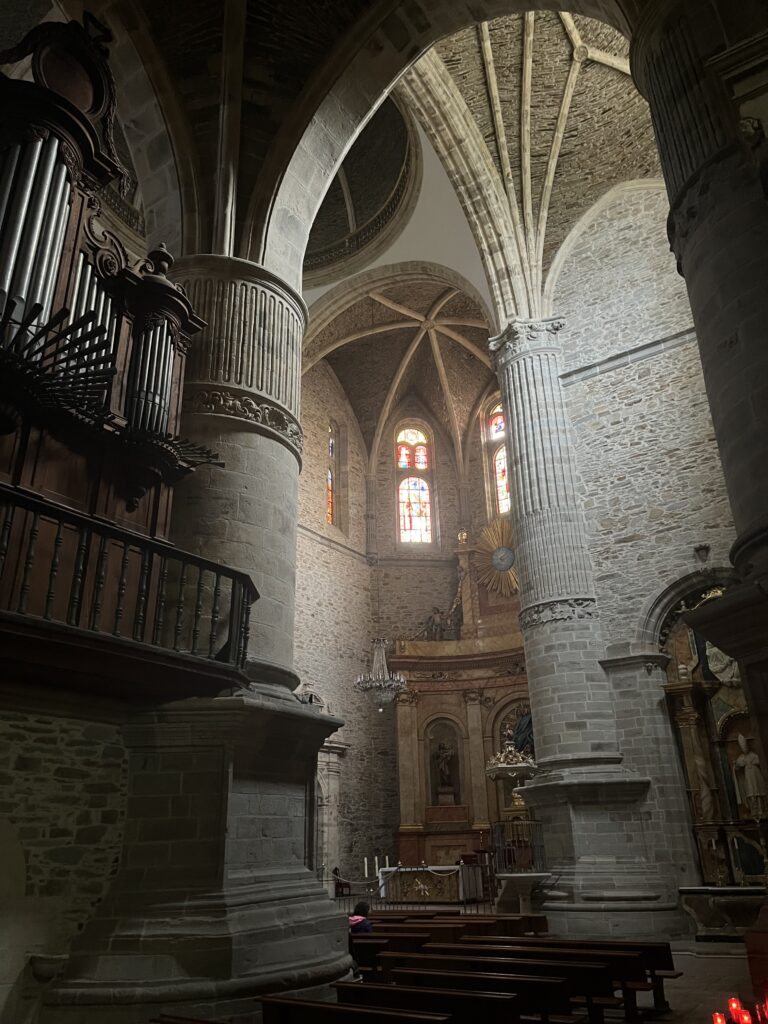
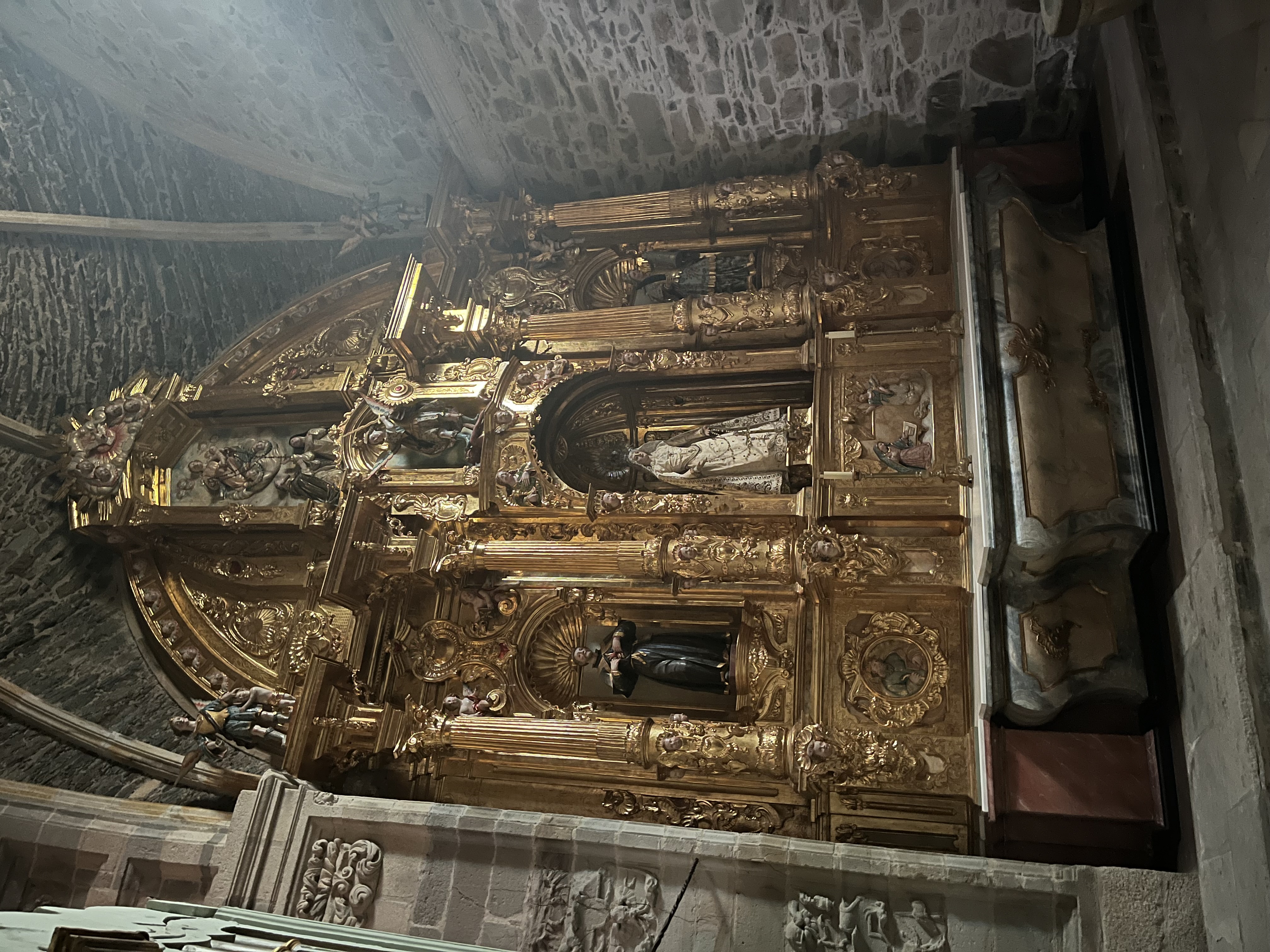
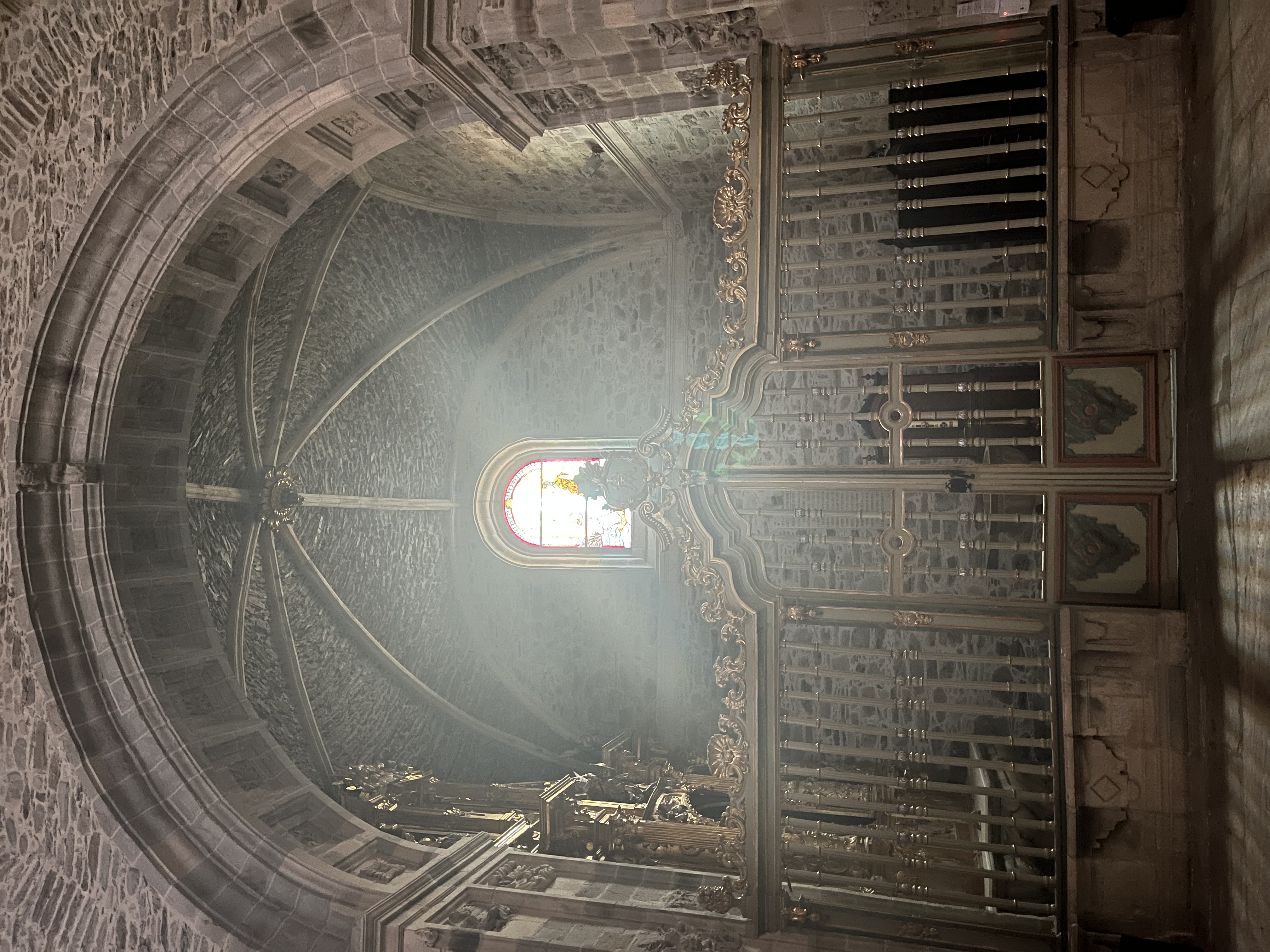
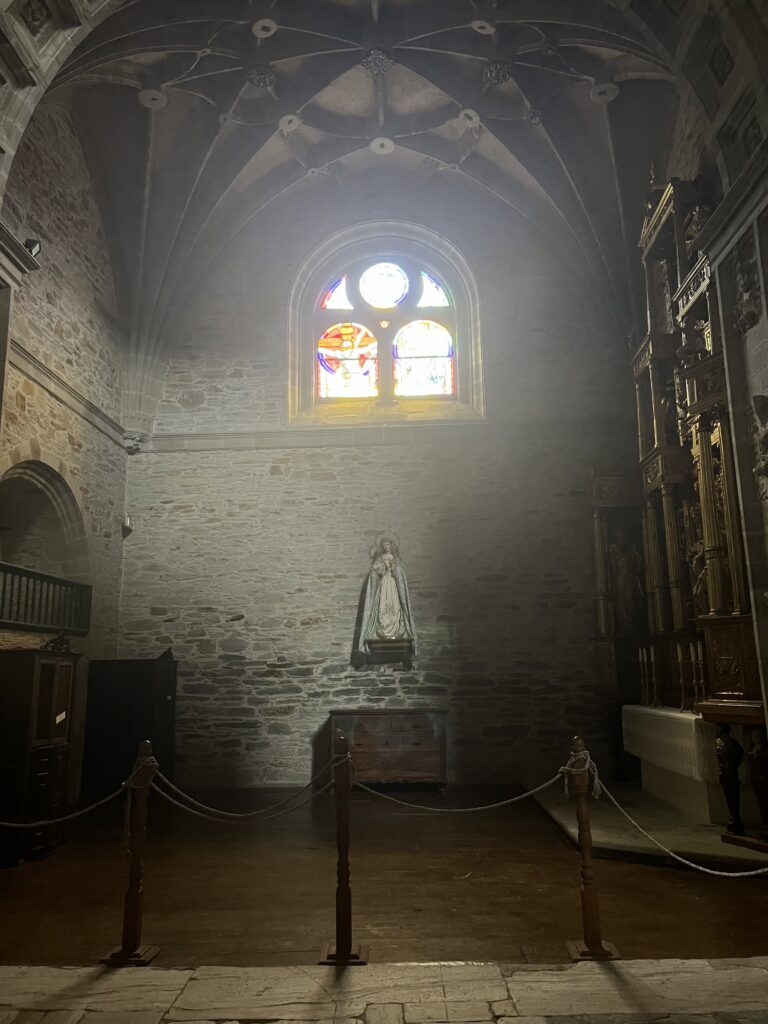
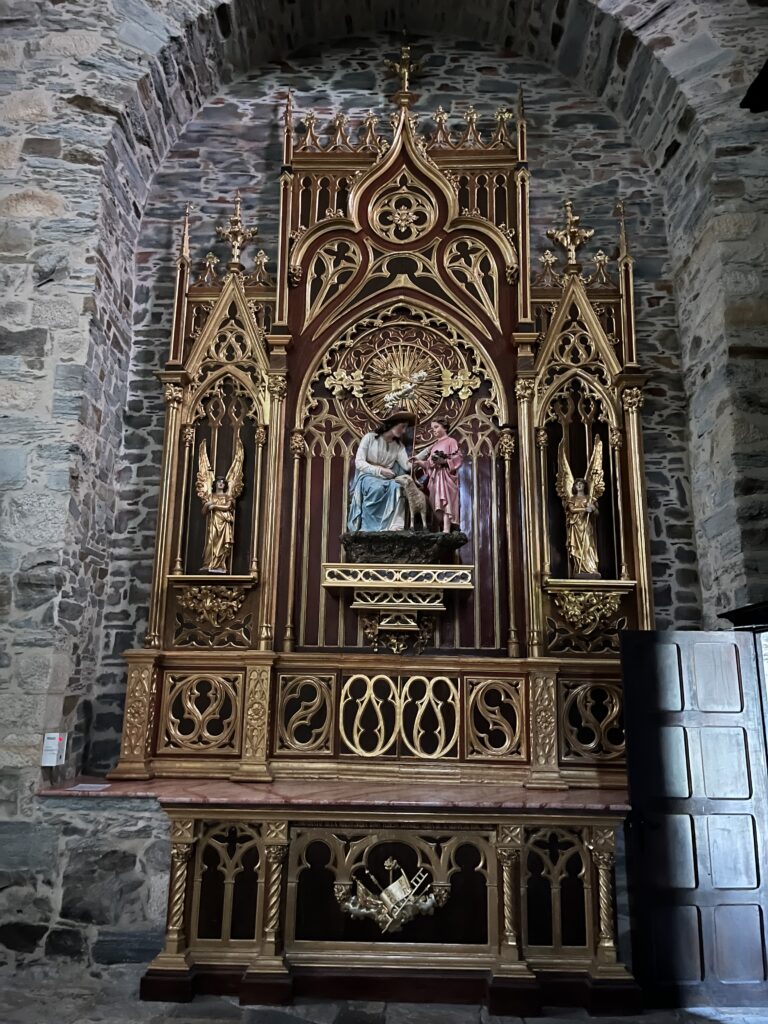
It is an awesome place, beautiful and wondrous throughout.
I prayed here for the intentions of the Camino, finishing just as the bell tower tolled 7 PM. Shortly thereafter, we were ushered out and the church was closed.
At this point, I returned to my albergue, which was built into the old Jesuit college of San Nicolás. I hoped to see if it was possible to get into the old chapel there, which judging by the outside was larger than most parish churches.
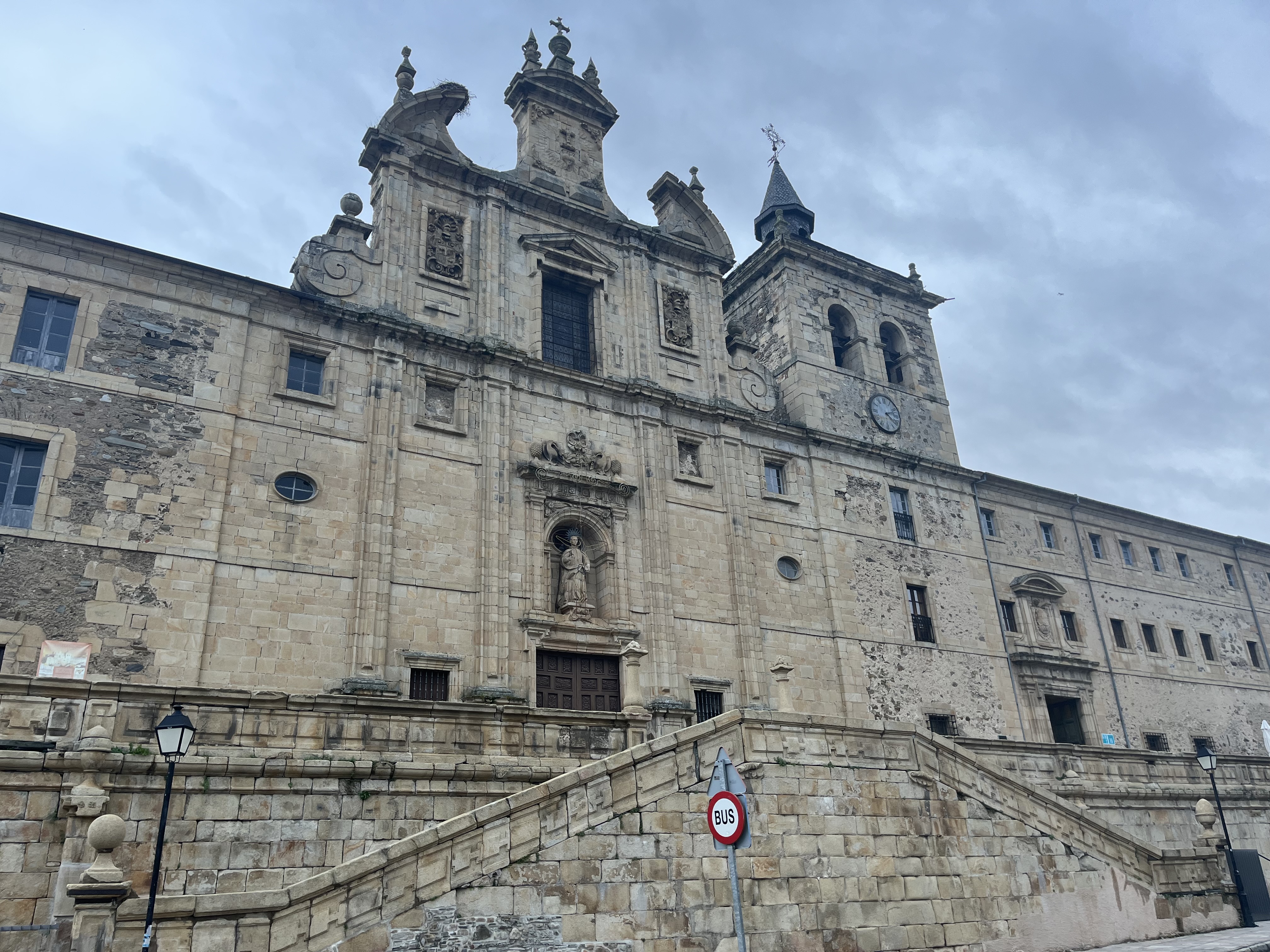
It proved impossible. An ethnographic museum was located in that half of the building, and the woman at the front desk told me “I’m sorry it is closed goodbye.” She pointed me instead to the church I had just left.
Shortly after I left, she came outside and took down the museum sign and closed the door. Apparently, everything was closing now.
I entered the portion of the building that contains the albergue. There were some very impressive murals on the walls of what I presume was once the cloister, but is now a connecting corridor to the bar’s outdoor patio.
The murals are all that remains of religious life in this former Jesuit college.
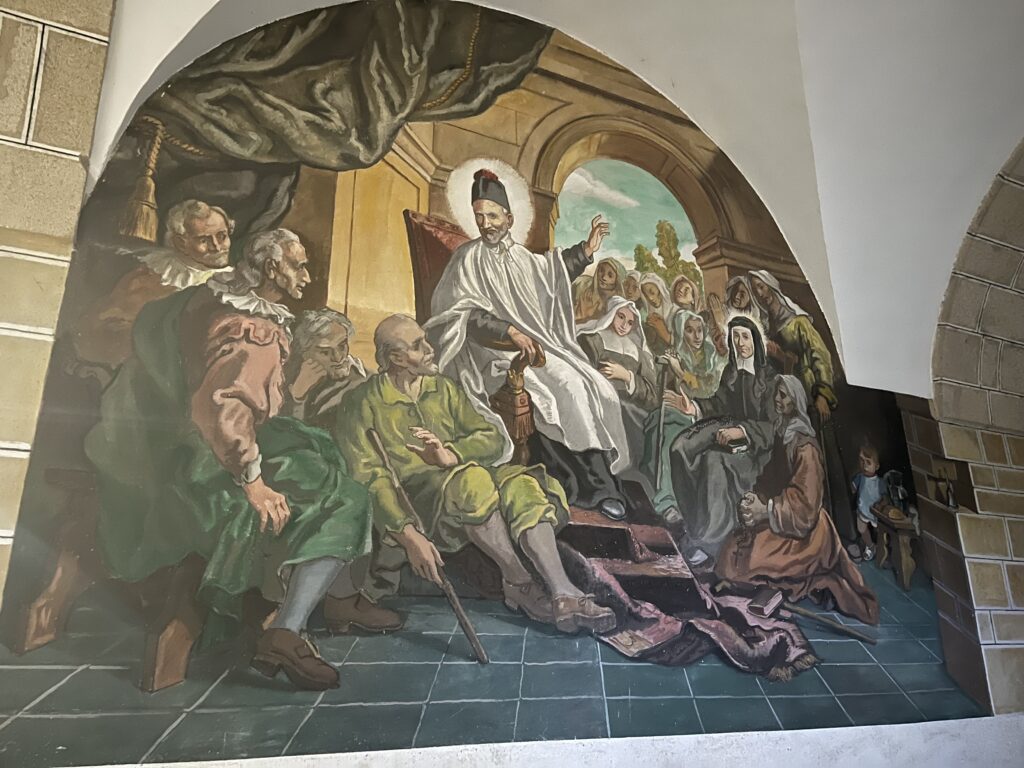
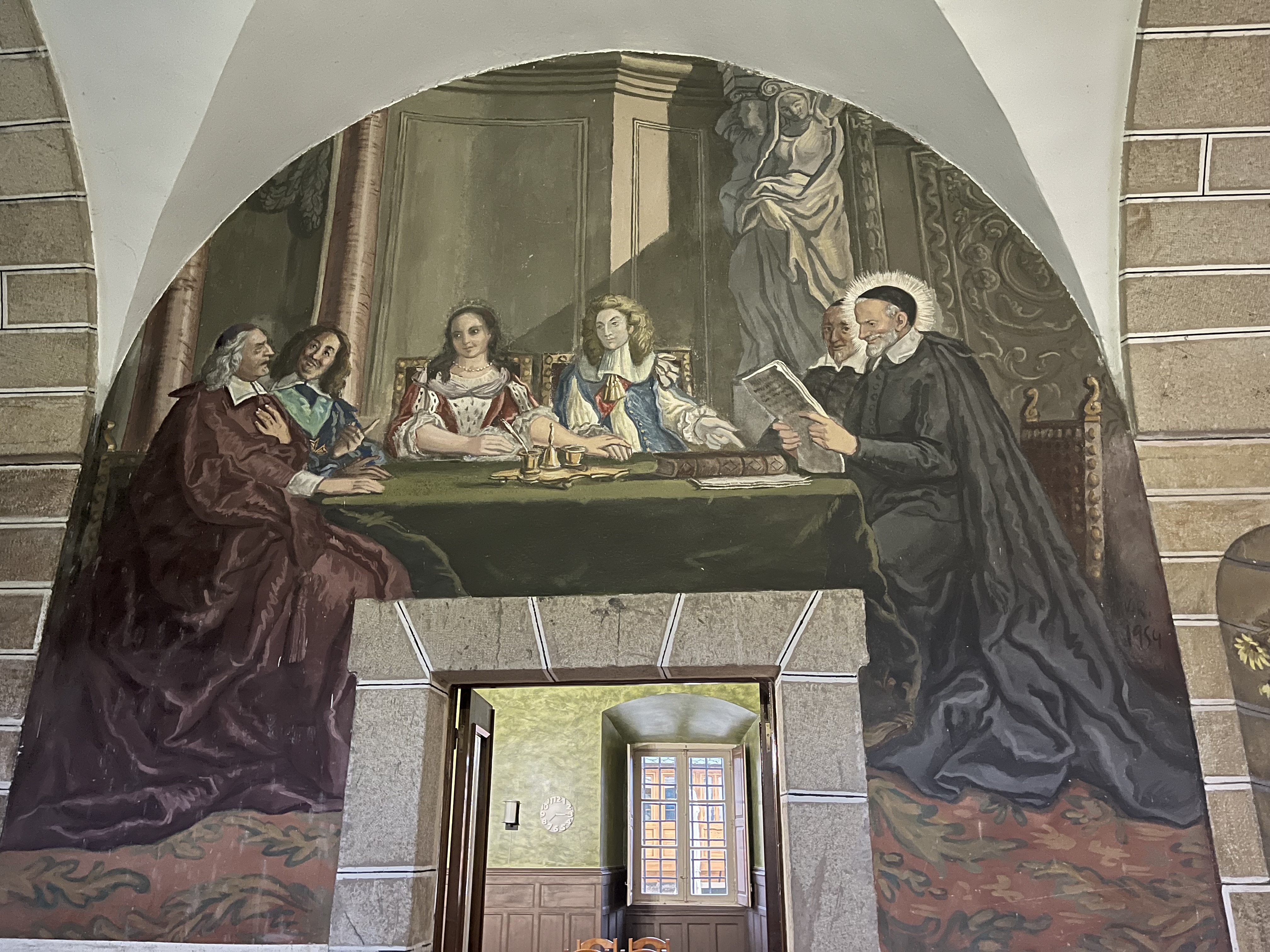
I went into the bar and ordered a beer and pondered the relationship between transience and transcendence, the ephemeral and the eternal.
Date: 15 October 2023
Place: Villafranca del Bierzo
